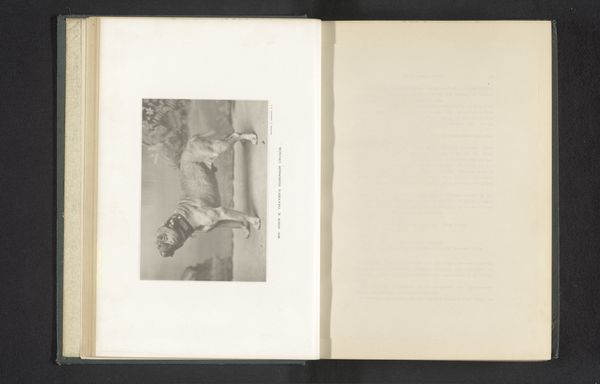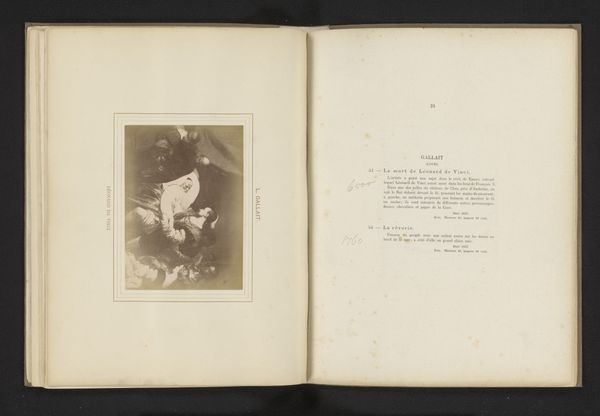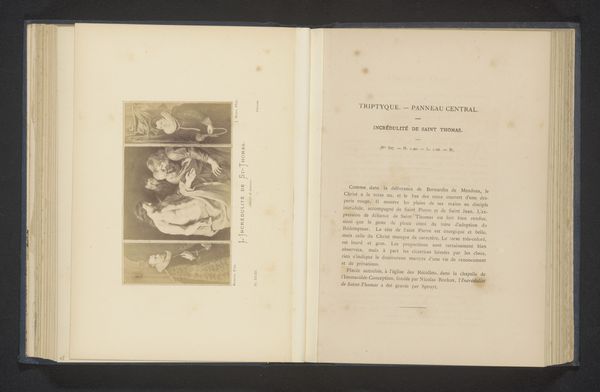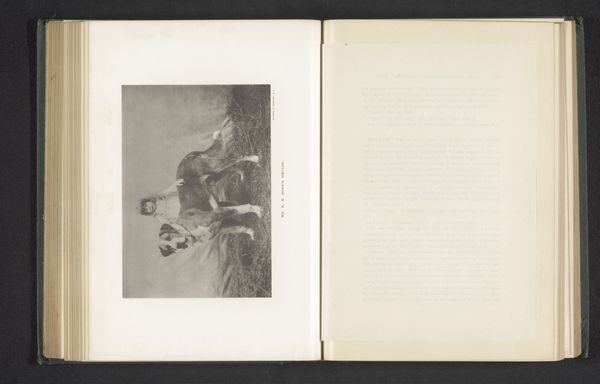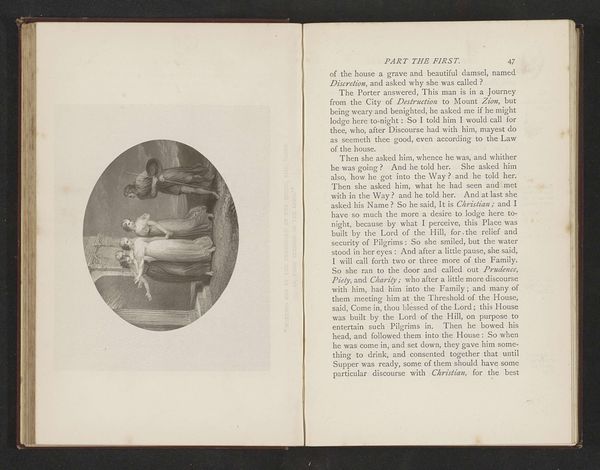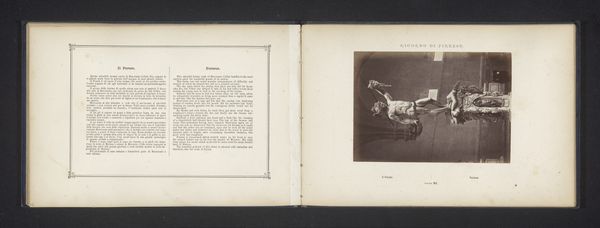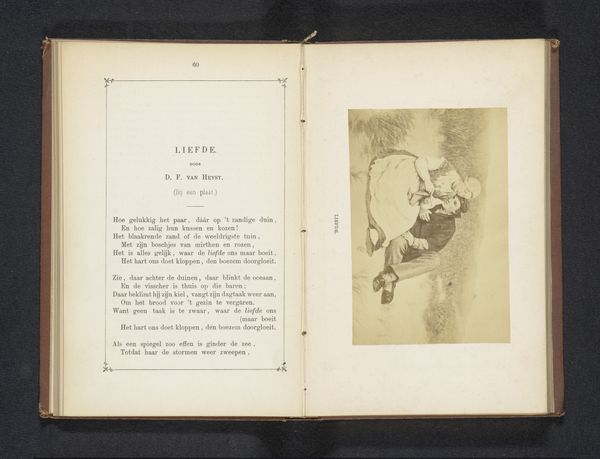
Fotoreproductie van een schilderij van een hond die met een schildpad speelt door Joseph Stevens before 1900
0:00
0:00
print, photography, gelatin-silver-print
#
portrait
#
animal
# print
#
dog
#
photography
#
gelatin-silver-print
#
genre-painting
#
realism
Dimensions: height 160 mm, width 196 mm
Copyright: Rijks Museum: Open Domain
This is a photomechanical print made by Alexandre, dating from around 1892, reproducing a painting by Joseph Stevens. The process involves photographing an image, then transferring it chemically to a printing plate. The choice of this method over hand-engraving speaks volumes. Photography allowed for mass production, creating affordable reproductions for a wider audience. Rather than valuing the singular skill of an engraver, this method prioritized efficiency and reach. The sepia tone lends a nostalgic feel, perhaps hinting at a longing for a slower, more handcrafted era. But the content itself – a playful dog and tortoise – suggests a lightheartedness that contrasts with the mechanical means of its creation. It poses a question: Can mass-produced images still capture the charm and spontaneity of the original artwork? I'd argue that, in its own way, this print becomes a document of its time. It is less about individual artistry and more about the industrialization of image-making. This challenges the traditional hierarchy between fine art and mechanical reproduction.
Comments
No comments
Be the first to comment and join the conversation on the ultimate creative platform.
